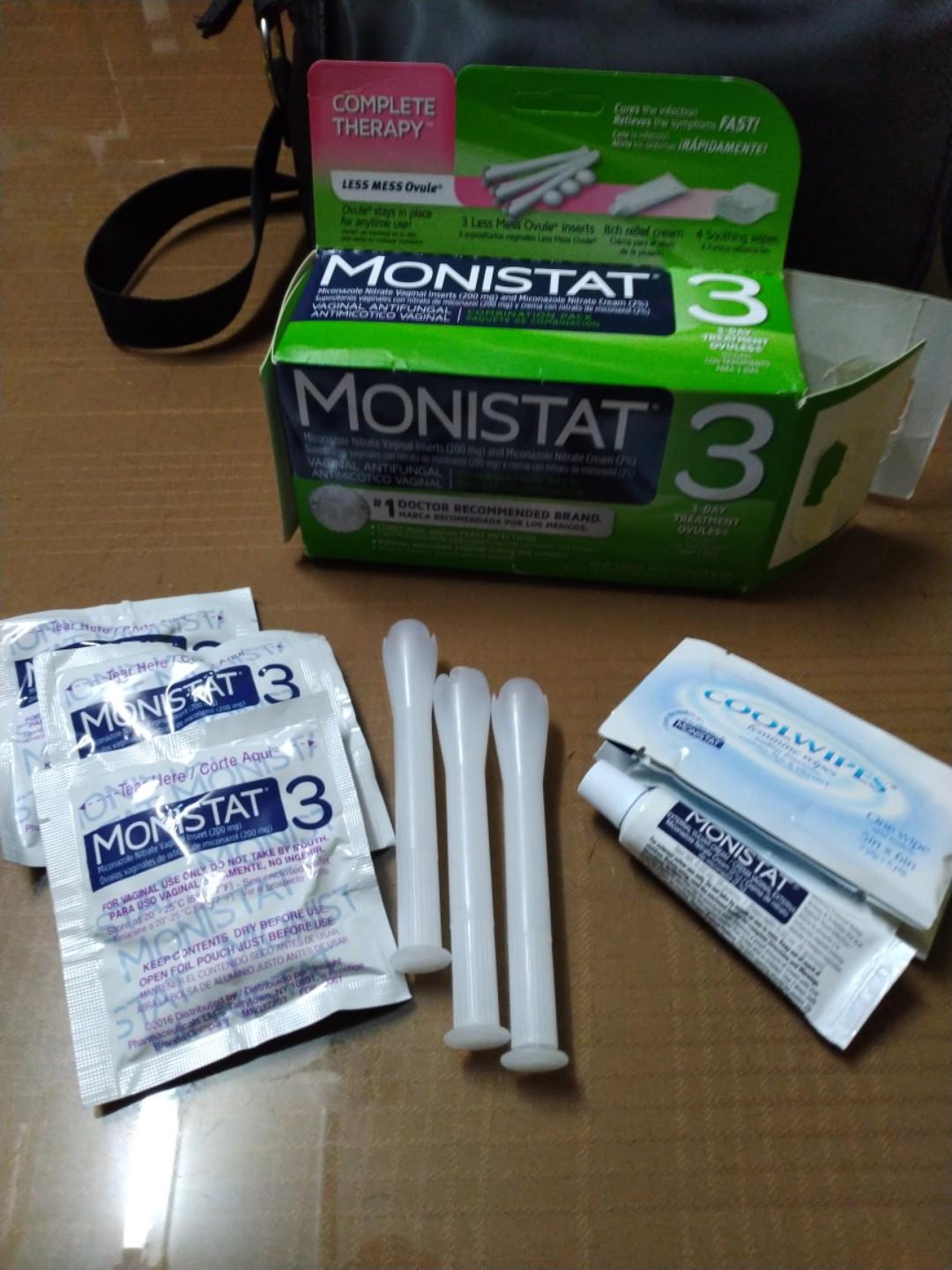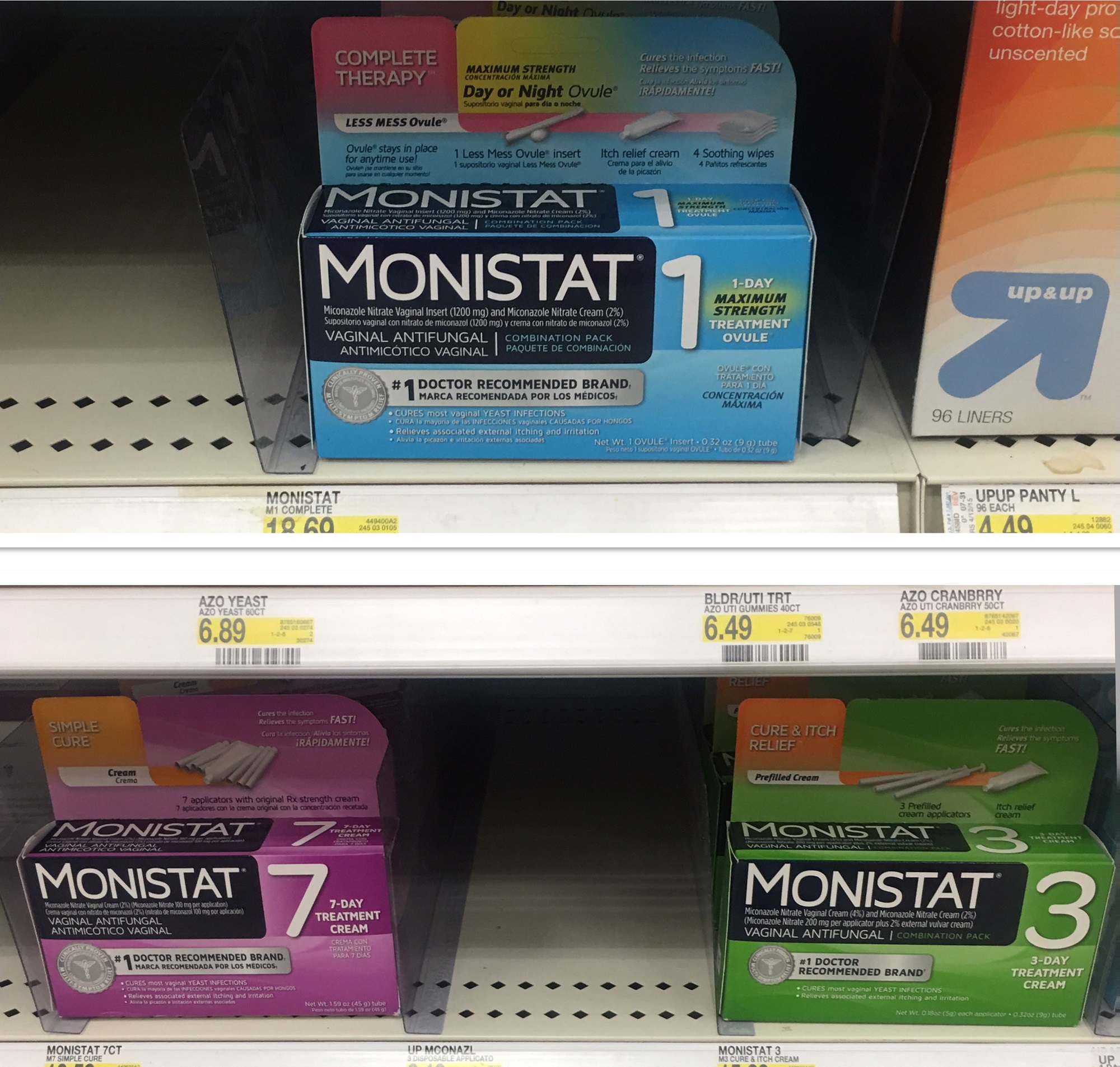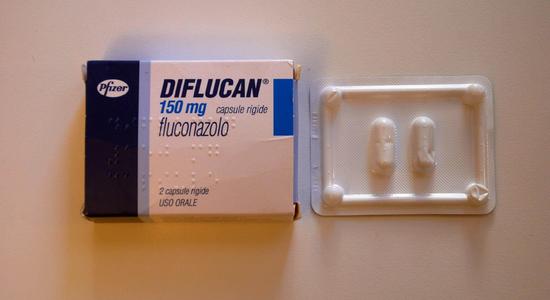See all "How Long" Section Topics

So, how fast will Monistat work to get rid of an infection? That question, is in actuality, somewhat difficult to generally answer. The odds may be somewhat in your favor; so Monistat could get rid of symptoms in about 3 days, or sooner. Then again, it could take up to 7 days for this product to get rid of a yeast infection. And, additionally, your yeast infection may not be cured at all using Monistat. It is assumed, for safety, Monistat officially states, regarding the time frame to cure, the following: "All MONISTAT® products can take up to 7 days to fully cure a yeast infection."
The key variable, that needs to be considered when trying to determine how fast Monistat will work, is the severity of your yeast infection. An uncomplicated, light yeast infection may go away in 3 days or less. A more complicated infection, could take up to the full 7 days to go away. And, in a significant minority of cases, Monistat will not get rid of a yeast infection at all. It is good to expect that up to a ¼ of all women who use Monistat will not get cured using the product (any product, Monistat 1, Monistat 7, or other products) once. Research has demonstrated that a strong dose (5g of 2% miconazole nitrate cream) of Monistat’s active ingredient failed to provide a cure in ¼ of the subjects who used this therapy for about a week to two weeks. This study will be discussed later on.
The active ingredient in Monistat is miconazole (synonym: miconazole nitrate). Miconazole is an azole antifungal; a typical class of drugs that work to eliminate fungi. These drugs usually have the word component "azole" in them. Diflucan is the brand name for the drug fluconazole; and, as you can tell, this drug also has azole in the name. You may have also seen different azole drugs for sale over the counter. These drugs can all be expected to produce somewhat similar times to cure. Since synthetic drugs are all somewhat similar in their efficacy; the main variable, again, to consider, is how severe your yeast infection is.
Although Monistat is efficacious in most cases, natural medicine is a viable alternative. Antifungal herbs and essential oils are more complex, containing hundreds of molecular structures within them, making them at times a more potent option to eliminating fungal overgrowths.
Financially, over the counter herbal formulas have the advantage over some prescriptions, as they can be more cost effective and more accessible for low risk yeast infections that need immediate attention. Higher risk yeast infections such as the genetic condition of chronic mucocutaneous candidiasis is not appropriately treated by home remedies.
A 1/2 Day & Yeast is Gone!
Linda Allen suffered from yeast infections for years. Through researching natural medicine & Candida, she found an efficacious solution!
Linda is one expert you want on your side! Let her show you how to get rid of a superficial yeast infection in just 12 hours; AND, keep it gone!
A 60-day, 100% money back guarantee is provided.
Visit Official Site!Research on the Time Frame to Cure

Research, published in Drugs [68.13 (2008): 1787-1802], discussed the time it takes for antifungal drugs to get rid of a yeast infection. The study related that a normal, non-severe vaginal yeast infection typically goes away with the use of any short term antifungal drug after about 3 days of treatment. The study states that symptoms will go away, and a mycological cure (having the yeast actually gone from the vagina), will result in many of the cases of those who complete the treatment. Prolonged treatment, lasting over 7 days, may be required for severe yeast infections (or those not caused by Candida albicans). In some cases, use of an antifungal needs to occur for up to 6 months, to keep the yeast infection from returning.
Prescription antifungal drugs are notorious for requiring long term treatments like this. A minority of women, those who get recurrent vaginal yeast infections, often are put on such long term treatment plans.
This research also states that the primary goal of vaginal yeast infection treatment is to arrive at complete relief of signs and symptoms of the infection after 48 to 72 hours. A mycological cure is hoped to be present in 4 to 7 days.
You may be wondering if your yeast infection is caused by Candida albicans (C. albicans). Often, this is the case; about 80% of all Candida infections are caused by C. albicans. The second leading species of Candida that causes infection is Candida glabrata; accounting for about 5% of yeast infections. Concerning the rate of cure for non-albicans infections; this study stated it has been estimated that approximately 50% of non-albicans yeast infections will respond to conventional use of antifungal drugs. In such cases, medical doctors will need to prescribe stronger doses of antifungals, and possibly a longer term of use of these drugs.
A study, published in Current Medical Research and Opinion [21.1 (2005): 127-134], looked at how Monistat 1 Day Combination Pack worked at getting rid of vaginal yeast infections. Specifically, the study’s aim was to ascertain if using Monistat 1 Day at different times in the day made any difference on the cure rate. And, this may also be pertinent, if you wanted to know more about how to use Monistat.
The study enrolled 573 women; however some women did not complete the study. In total, 516 women completed the study; a sizable number. It should be noted, that women with recurrent yeast infections (defined as having 4 or more episodes of vaginal Candidiasis in the previous 12 months), were excluded from the study. So, if you are one of the women suffering from recurrent Candidiasis, these results may not accurately reflect your personal situation. Also, women with other vaginal anomalies (such as genital warts or herpes lesions) were excluded from the study. This was done if the anomaly could cause a misinterpretation of the results.
The women in the study were randomly divided into two groups. One group of women were randomly assigned to a night time group. These women were instructed to insert the Monistat ovule when they went to bed; and, remain in bed after the ovule was inserted for at least 30 minutes. The women randomly assigned to the daytime group were instructed to insert the ovule within 6 hours after they woke up. Both groups of women were to insert the Monistat 1 vaginal ovule within 48 hours after the admission visit. The Monistat 1 Combination Pack also comes with a 2% miconazole nitrate vaginal cream. All the women in both groups could apply this cream externally to the vulvar area up to two times a day, for 7 days.
The women in the study were contacted 7 to 10 days after the first dose of Monistat 1 Day Combination Pack. The women’s use of Monistat was ascertained; and, information on the incidence of adverse events, or simultaneous therapy, was collected.
The rate of cure for vaginal yeast infections was determined 21 to 30 days after the women took the first dose of Monistat. At this visit, signs and symptoms were evaluated, and a laboratory test was conducted to indicate the presence of Candida. Concerning how the study defined a cure; three criteria were employed: resolution of symptoms, laboratory testing, and therapeutic cure rate. A therapeutic cure was defined as both a resolution of symptoms and having a laboratory test negative for Candida. And, concerning how long it took Monistat to cure a yeast infection; the time frame to initial relief of symptoms was determined by the women’s recording of their symptoms for up to 7 days.
We can only get a good idea as to how fast Monistat worked in the study by remembering the women recorded their symptoms for up to 7 days after using the drug. Therefore, the relief of symptoms will provide insight into how quickly Monistat works. In the daytime group 111 (74.5%) women were considered a clinical cure; meaning they did not have symptoms of a yeast infection. In the nighttime group, 120 (73.6%) women arrived at a clinical cure. Therefore, we can see that about 3/4 of women who use the Monistat 1 Day Combination pack should see a resolution of symptoms within 7 days of using the product. However, some women, about ¼ of product users, will not see definitive resolutions of their symptoms.
Concerning the rate of therapeutic cure; i.e. the rate of a total cure; garnered by the study, was somewhat less than the rate of symptom reduction. Overall, for a therapeutic cure (both a laboratory cure and clinical cure) for the daytime group was seen in 86 (57.7%) women. For the nighttime usage group, 83 (50.9%) women were considered a therapeutic cure. Therefore, we can see, using the Monistat 1 Day Combination Pack brought about an actual cure in a little over half of the women who used the product.
Eliminate Bacterial Vaginosis & Vaginal Odor
Jennifer O’Brien is one prominent expert on BV that knows how to get rid of vaginal odor. BV is a common infection that you don’t have to put up with.
Jennifer will show you how to naturally eliminate vaginal odor in just 3 days.
A 60-day, 100% money back guarantee is provided.
Visit Official Site!Which Monistat Should you Get?

A study, published in Obstetrics and Gynecology [53.2 (1979): 250], looked at how various miconazole treatment plans would work to cure yeast infections. The research was able to have 204 women participate. Some of the criteria for participants to be admitted into the study were as follows: be a female of 18 years of age or older, have clinical signs and symptoms of a vaginal yeast infection, not have trichomoniasis; and, aside from a yeast infection, be in good health. These participants were randomly placed into 1 of 5 treatment plan groups. The treatment plans were organized by the number of days the women used miconazole. The amount of miconazole the women took is as follows:
- The 1 Day Treatment Group: One 5g applicator of Monistat (2% miconazole) vaginal cream.
- The 2 Day Treatment Group: A 13.5g supply of Monistat (2% miconazole) cream.
- The 4 Day Treatment Group: A 23.0g supply of Monistat (2% miconazole) cream.
- The 7 Day Treatment Group: A 55.0g supply of Monistat (2% miconazole) cream.
- The 14 Day Treatment Group: A 85.0g supply of Monistat (2% miconazole) cream.
As you can see, the women all used the same 5g dose of the cream. And, therefore, the women who take this same dose for more than one day, are going to be getting a lot more of the drug. Especially, of course, concerning those women who took the drug once (one day) and those who took the drug 14 times. Additionally, 5g is much more of the miconazole cream than what you will find in Monistat 1. At the time of this writing, Monistat 1 comes with one 1200 mg (1.2g) vaginal insertion ovule. The women in this study used almost 5 times as much of the drug on just the first day. So, keep in mind, the resulting cure rates of this study will probably be better than those that will happen for women who use over the counter Monistat products.
The women in the 1 day treatment group used the miconazole cream right away. The women in the other groups were directed to insert one applicator of 5g of the cream before they went to sleep; doing this for the specified number of days. The women participating also recorded their use of the drug, and the symptoms they were experiencing, on a daily basis. These women handed in their cards at a post-therapy visit.
Concerning the definition of a cure, the research used microbiological exams and evaluated symptoms. If itching, irritation, burning, and redness of skin were normal or absent, this was considered a clinical cure. The study defined a therapeutic cure as having no Candida in a microbiological exam; and, also, the women had to have a clinical cure as well. Thus, a therapeutic cure encompassed both cure tests.
The study found that pregnant and non-pregnant participants responded similarly to the miconazole therapy. Concerning the effectiveness of drug use in the treatment groups, there was a very noticeable difference in cure rates. Those women that received treatment for 1 day had a therapeutic cure rate of 28.9%. Those women that received treatment for 7 days had a therapeutic cure rate of 79.1%. The study found that treatment regimens of at least 7 days are comparable to those that last for 14 days.
These results are expected, as the women in the one day treatment group only took one 5 gram dose of the miconazole cream; compared to the women taking this same dose each day, for more than one day. The study’s important finding, was that taking Monistat for 7 days is approximately as effective as using this product for 14 days. Therefore, there is no need for a 14 day treatment regimen at these doses; as 7 days will be equally as effective. The study concluded with this remark, "Earlier studies have indicated that a regimen consisting of 1 application (5g) of miconazole nitrate 2% vaginal cream, once daily for 7 or more days, has a therapeutic cure rate equivalent to the currently marketed 14-day regimen."
Buying Monistat
As the research indicates, it is ideal to take 5g of Monistat intravaginally for 7 days to get cured. This is likely overkill for the majority of women with yeast infections; as, they will not be that severe. Most women who select an over the counter product like Monistat, may not have a very severe infection. Still, the cure rate, the one day use of the 5g intravaginal treatment of Monistat effected was small in the research.
Clair Goodall: Author & Nature Lover
Clair Goodall is a bee-obsessed natural medicine convert from Minnesota. She is one expert you might want to know more about!
Clair will help you protect you and your family from toxic products and chemicals and help you discover solutions from nature.
Also, Clair’s book is backed by a 60-day, 100% money back guarantee
Visit Official Site!How Long Does Miconazole Stay in the Body?

Miconazole stays in the body differently depending upon how it is applied. A study, published in Drugs [9.6 (1975): 406-423], stated "There is virtually no systemic absorption following application of topical or vaginal cream." However, concerning oral administration of miconazole, this study cited research where 3 subjects were given a 1g dose of oral miconazole. The highest levels of the drug in the blood occurred 4 hours after the drug was taken. The drug was detectable in these people’s body for up to 72 hours. About half of the drug was present in the feces of these people; and the drug was primarily un-metabolised. And, in the urine, 10% of the remainder of this drug was detected.
Regarding topical and intravaginal use of miconazole, one study looked into this. The research was published in the European Journal of Clinical Pharmacology [5.2 (1972): 93-99]; and, used tritiated 2% miconazole cream on 6 volunteers. Tritiated means that one or more of the hydrogen atoms in miconazole were tritium. Tritium is a hydrogen atom with one proton and two additional neutrons. The extra neutrons make this hydrogen atom radioactive to some extent. The slight radioactivity is used to measure the presence of the substance; as it may not be detectable in the body otherwise.
Of the volunteers, 3 of them used a 5g dose of the tritiated 2% miconazole cream intravaginally. The other 3 volunteers used a 1g dose of the cream on their forearm; their forearm was then covered with a dressing for 8 hours. The study found, that in both groups of volunteers, the total radioactivity in the blood was too low to be accurately measured. Over the course of 72 hours, approximately 1% of the vaginal dose was found in the urine. Of the topical application, 0.35% of the dose was present in the urine. In both groups, only metabolites (i.e., a substance which is a by-product of metabolism) of miconazole were recovered in the blood plasma and urine. Therefore, relatively little miconazole enters the body system after it is used.
A 12 Hour, Natural Yeast Infection Remedy

Although a yeast infection is an arduous experience; having to go through an infection repeatedly can be even more of a problem. A woman, Linda Allen, was an unfortunate sufferer of recurrent yeast infections. Linda’s story was similar to other women who are going through a chronic situation with Candida. This health problem, not only took the life out of many of her years, it also drained Allen financially. Fortunately, after about 12 years, Linda was able to solve her Candida problem.
Linda’s troubles began in her late teen years; around this time, she also developed a sinus infection. Linda began getting yeast infections; and, proceeded to a doctor in hopes of a solution. Linda’s doctor prescribed her an antifungal; and, after using it Linda found her infection went away. This relief, however, was only momentary. Like many women with recurrent Candidiasis, Linda’s yeast infection came back, after some time had passed. The doctors simply prescribed her more drugs; put her on antibiotics; and, even tried allergy medication.
Linda’s overall health was simply terrible; and, the medical bills began to take their toll. At the time in her life where she could have afforded a house to live in; Linda found herself, due to her medical expenses, living in a small apartment. Those that knew her thought possibly she either wasn’t being forward about how bad her health was, or that she was just a hypochondriac.
Linda was unable to get a solution from regular medical professionals; yet, one day made an appointment with a naturopathic practitioner. The naturopath knew exactly what was wrong with Linda; and, why she had all these mysterious health anomalies. Linda’s problem was systemic Candidiasis—yeast had just invaded her body. The solution to her health maladies was eliminating this yeast from her body.
After learning this truth, Linda began to ardently research Candidiasis; and, the various therapies for treating it. Linda began dedicating a great deal of time to research; and, inquired of health professionals who were kind enough to lend her some of their time. Linda accumulated a great amount of information, and tried many different therapies on herself. Eventually, this resulted in a workable system for getting rid of her systemic Candida.
Linda spent one year refining her system, and eventually tried it. Thankfully, Linda’s treatment plan worked very well. Soon after starting, her yeast infections stopped. As time progressed, the systemic yeast infection went away; and, her good health began to finally return. Linda had solved her health problem. By utilizing the power of natural medicine, Linda regained her life; and, permanently ended her struggles with Candida.
Linda began to share her treatment plan with others she had become associated with during her journey to recovery. They also were able to use her plan with much success. Linda also wrote an entire book outlining her natural treatment protocol. Linda has made her book available in a digital format; it is available for download as a PDF document (PDF stands for portable document format; and this should be accessible on your smartphone, tablet, or computer). Linda also includes a guaranteed plan to cure a yeast infection in about 12 hours of time; a time frame much better than prescription, or over the counter, synthetic drugs.
Linda chose to publish her book with a large online retailer; a subsidiary of Keynetics Incorporated—a firm based in Boise, Idaho. Linda’s publisher has exceptional customer support and handles the affairs regarding her book. Linda’s book is protected by a 60 day, 100% money back guarantee as well. If you decide to try her book, and you find it unsatisfactory for some reason, you can contact Linda’s publisher and quickly get a refund for the purchase. Again, you will have 60 days to evaluate Linda’s book; much more time than just 12 hours! So, for example, if your yeast infection isn’t gone in about half a day; you can easily get all your money back. Using Linda’s experience and advice may be one of the best things for you—if you’ve spent years, like Linda, suffering from Candida related health problems.
To learn more about Linda Allen’s personal story, her journey towards recovery, and her efficacious book, you can find out more at Linda Allen’s website.
Author: Mr. Nicholas Gross

Nick Gross is a natural medicine enthusiast who has been researching and writing about natural medicine since 2008. Nick is primarily a web developer but also researches and authors written and video content about natural health. Nick has a bachelor’s degree in Management Information Systems from the University of Northern Iowa.
Disclaimer
The information on this website is not a prescription for anyone. This information is for informational or educational purposes only, and is not a substitute for professional medical advice or consultations with healthcare professionals.
Affiliate Disclosure
Some of the links provided on this website are affiliate links. When a purchase is made through these links, Candida Hub earns money from commission. This helps to keep the website up and helpful to people for free. Thank you for any support!
Stay Up to Date
If you enjoyed this article, consider following / liking our Facebook page. This page is primarily utilized to alert followers of new articles that are put on Candida Hub. Candida related news is also discussed. While you are there, you can see what has been more recently added to Candida Hub.
SOURCES:
- PubChem (U.S. National Library of Medicine) — Miconazole, a.k.a. Miconazole nitrate: C18H15Cl4N3O4
- https://www.monistat.com/vaginal-health-blog-articles/speed-symptom-relief — Monistat’s website. Page referred to time to cure using their products.
- https://dx.doi.org/10.2165/00003495-200868130-00002 — das Neves, Jose, et al. "Local Treatment of Vulvovaginal Candidosis: General and Practical Considerations." Drugs [68.13 (2008): 1787-1802]
- https://doi.org/10.1185/030079904X18018 — Barnhart, Kurt. "Safety and efficacy of bedtime versus daytime administration of the miconazole nitrate 1200 mg vaginal ovule insert to treat vulvovaginal candidiasis." Current Medical Research and Opinion [21.1 (2005): 127-134]
- https://www.ncbi.nlm.nih.gov/pubmed/418984 — Pasquale, S. A., et al. "A dose-response study with Monistat cream." Obstetrics and Gynecology [53.2 (1979): 250]
- https://doi.org/10.2165/00003495-197509060-00002 — Sawyer, P. R., et al. "Miconazole: a review of its antifungal activity and therapeutic efficacy." Drugs [9.6 (1975): 406-423]
- https://doi.org/10.1007/BF00561752 — Brugmans, J., et al. "Systemic antifungal potential, safety, biotransport and transformation of miconazole nitrate." European Journal of Clinical Pharmacology [5.2 (1972): 93-99]








